Navigating Peak Season: Sustaining Your Supply Chain Marketing Engine
Peak season can wreak havoc on your company's marketing efforts, but a thoughtful approach can ensure success amid the chaos.
Whether you’re a technology company striving to engage a distracted audience, or a supply chain company consumed with managing your operations, sustaining an effective marketing engine during peak season is crucial. Peak season, which spans from mid-August to November, corresponds with a surge in retail and e-commerce sales, encompassing key shopping events like back-to-school and the holidays, prompting increased production by manufacturers. Consequently, companies within the supply chain space face the challenge of handling larger quantities of products, ensuring proper storage, and timely shipping to meet the heightened demand and ensure availability on store shelves.
First, we’ll address supply chain technology companies (or anyone that sells into supply chain companies).
If you’re a company in the supply chain dealing with peak firsthand, click here.
Short and simple: if your sales depend on engaging a company who experiences the vortex of peak season, your marketing efforts should focus on understanding your audience and delivering impactful top-of-the-funnel messages that can be digested quickly. Now that we have that out of the way, let’s take a deeper dive.
Understanding Your Audience and Their Behaviors During Peak Season
As we’ve already mentioned, supply chain CEOs and decision-makers are often overwhelmed with managing their businesses, but mining your own company data will give you better insight to prioritize your marketing efforts. Here are a few exercises to understand where to put your focus:
- Analyze past sales data to identify popular products, promotions, and customer purchasing patterns to spot relevant trends in product categories, order volumes, and customer behavior during peak season.
- Review website traffic data and engagement metrics to identify popular pages, referral sources, and customer interaction patterns and pull social media metrics to understand which channels drive the most engagement and conversions during this time period.
- Engage customers in the off-season to understand the experience through their eyes. Use surveys or customer advisory boards to ask your audience to reflect on peak season (among other crucial aspects of their business) and gather information related to their challenges, behaviors, and preferences.
Now that you understand more about your audience’s behaviors during peak, consider these other factors as you plan your attack:
Deliver Short, Digestible Content (unlike this blog 😝 )
Now is not the time for full-out ebooks or long-form guides. Your campaign should consist of concise and engaging content that quickly and succinctly conveys the value and benefits of your technology solutions.
- Use attention-grabbing headlines,
- bullet points,
- and plenty of visuals to capture the audience’s attention
Address Pain Points
Hopefully you know your target audience well enough to understand their challenges during peak season – whether it’s inventory management, demand forecasting, order fulfillment, etc (if not, it’s time to create your ICP – here’s some help). Don’t let that insight go to waste – tailor your marketing messages to directly address these pain points and showcase how your technology can alleviate specific challenges and drive results.
Focus on Top of the Funnel Marketing Tactics
During peak season, when your target audience is busy and their attention is divided, focusing on top-of-the-funnel content becomes crucial. Top-of-the-funnel content allows you to generate awareness, establish authority, and build relationships, during a time when your audience is likely too distracted to integrate any new technologies. Some attention-grabbing tactics we recommend include:
- Addressing trending topics and sharing your “hot take” with your social media following
- Consider deploying social media listening tools to observe conversations and sentiment related to peak season
- Sharing quick insights and practical tips, understanding that your audience is not entertaining any “fluffy” content right now
- Showcasing success story highlights in infographics or concise summaries
- Highlighting key metrics such as efficiency, cost savings, and customer satisfaction
It should go without saying that your audience’s pain points should be front and center to make sure your tactics are signing the right tune. For more evergreen brand awareness tips, visit our blog on standing out in a crowded market.
Adjust Your Marketing Channels
Remember that traffic and engagement data you collected? Put it to good use by doubling down on the channels that yielded the best results in the past.
Personalize Communication
Your best bet to establishing a connection with potential customers is by addressing them 1-on-1 (or at least, appearing to). Use tokens to personalize names, company names, and any other relevant information you can seed into an email.
If you take the time to tailor your approach to resonate with the busy nature of your target audience, you’ll be in a solid place to make meaningful connections and set the stage for future engagements.

On the other hand, if you’re heading up a supply chain company that’s experiencing peak season, you’ve got a different set of challenges to tackle.
Your job is to ensure your marketing team is prioritizing efficient communication and engagement while maintaining customer satisfaction.
In short, when your talent is getting pulled in all directions to manage the overall business during this busy season, you’re going to want to leverage automation, pre-plan marketing campaigns and content, and focus on retention marketing tactics to keep your shippers and carriers engaged.
Leverage Automation
Unless you want to manually deploy all of your marketing tactics and painstakingly measure all of your efforts individually, marketing automation is a must. In busy seasons like peak, marketing automation software will enable you to:
- Set up automated lead nurturing campaigns to ensure that leads stay engaged
- Personalize your marketing tactics at scale, creating a more tailored and relevant experience for your customers and prospects, even during peak season when you may have limited resources to devote to individualized communications
- Schedule and publish posts in advance, ensuring consistent brand presence and timely updates even when your team is occupied with other tasks
- Track key metrics such as open rates, click-through rates, and conversion rates to inform decisions and optimize your marketing efforts
- Maintain consistent communication with your audience without manual intervention- creating and scheduling automated email campaigns, segmenting audiences, setting triggers, and sending personalized emails based on specific actions or events
If your marketing team is overstretched during peak and you don’t have a marketing automation platform, run – don’t walk – to implement one (we recommend HubSpot).
Pre-plan Marketing Campaigns
Meticulously plan your marketing campaigns in anticipation of peak season demand. Along with the prerequisites of knowing your typical audience’s behavior during this time, and aligning on campaign objectives, this includes:
- Creating a comprehensive content calendar and get that content written ahead of time. Consider the customer journey and align your content with different stages, from awareness to conversion (for some tips, check out our blog on content mapping). Be mindful of key dates and events during the busy season and plan your content accordingly.
- Allocating resources ahead of time. Identify tasks that can be automated or outsourced to alleviate the workload on your team (if you’re on the fence about outsourcing your marketing efforts, check out this blog).
Optimize Customer Communication and Engagement
By prioritizing retention and lifecycle marketing strategies during peak season, marketers can strengthen shipper and carrier relationships. To get the most bang for your buck during this busy period, you may turn your focus to:
- Personalized Communication (again): Leverage customer data to personalize communication. Send targeted emails, notifications, or alerts that address their specific needs and challenges. Provide relevant information about shipment tracking, real-time updates, or industry-specific insights to enhance their experience and build loyalty.
- Post-Transaction Engagement: Implement post-transaction engagement strategies to foster ongoing relationships. Send follow-up emails or surveys to gather feedback on their experience.
- Upselling and Cross-Selling Opportunities: Identify opportunities to upsell or cross-sell additional services or value-added solutions to drive expansion with shippers and carriers.
As we sat down to write this blog, we realized there was a lot to cover and we still only scratched the service.
If you find yourself overwhelmed or uncertain about where to start to keep your marketing engaging running during peak season, consider partnering with a marketing agency. Their expertise and resources can be a godsend, helping you define a robust strategy and execute it effectively.
Let's Talk.
With the right mindset, planning, and the support of a trusted agency, you can navigate the challenges of peak season, drive business growth, and emerge stronger in the competitive supply chain landscape. We’re here to help.


